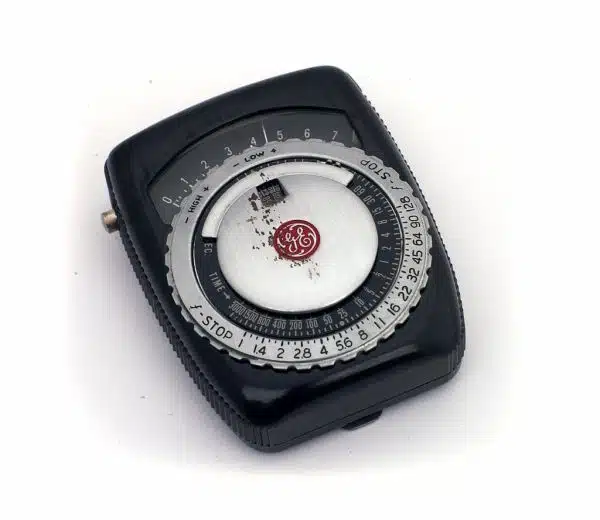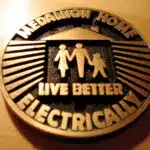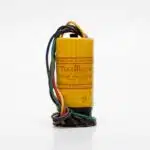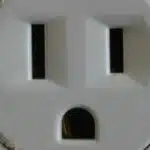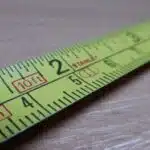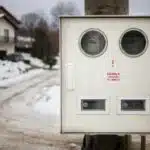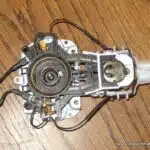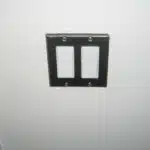Electric meters are used to measure the amount of electrical energy consumed by a household or business. These devices are essential for billing purposes and help individuals keep track of their power usage. Understanding how an electric meter reads power usage is crucial in managing energy consumption and reducing electricity bills.
Electricity is measured in units of watt-hours, which represents the amount of energy used per hour. An electric meter records the amount of electricity flowing through it over a period of time, usually in one-hour increments. The meter uses a system of measuring voltage and current to calculate the power usage accurately. This measurement helps utility companies determine how much electricity was used during a particular billing period and charge customers accordingly. In this article, we will explore how an electric meter works and how it measures power usage accurately.
The Importance Of Understanding Power Usage
Did you know that the average American household spends approximately $1,450 a year on electricity? That’s a staggering amount of money! As an electric meter reading expert, I understand the importance of monitoring power usage and understanding energy bills. By doing so, we can save money and reduce our carbon footprint.
The benefits of monitoring power usage are numerous. Firstly, it helps us identify areas where we may be wasting energy and therefore wasting money. For example, leaving appliances on standby or using old, inefficient light bulbs can significantly increase our energy bill. Secondly, it allows us to take control of our energy usage and make informed decisions about how to reduce it. This could involve small changes like turning off lights when leaving a room or investing in more efficient appliances.
Understanding energy bills is also crucial in managing our power usage. Many people find their energy bills confusing and don’t fully understand what they’re paying for. By taking the time to read and analyze our bills, we can identify any discrepancies or unexpected charges. We can also compare our bills month-to-month or year-to-year to see if we’re making progress in reducing our energy consumption.
By monitoring power usage and understanding energy bills, we can make significant savings on our electricity costs while also reducing our impact on the environment. In the next section, I will explain what electrical energy is and how it is measured by an electric meter.
What Is Electrical Energy?
Electrical energy is a form of energy that is generated by the movement of electrons through a conductor such as a wire. It is measured in terms of voltage and amperage, and is commonly used to power electrical appliances. There are two main types of electrical energy, direct current (DC) and alternating current (AC). DC is generated by batteries and is used for low-power applications, while AC is generated by power plants and is used for higher power applications. Electric power generation involves the conversion of various sources of energy, such as fossil fuels, solar, nuclear, and wind energy sources, into electrical energy.
Types Of Electrical Energy
As an expert in electric meter reading, I find that it is crucial to understand the different types of electrical energy. Renewable energy sources are a growing trend in today’s society as we strive towards more sustainable ways of living. These sources include solar, wind, geothermal, hydroelectric, and biomass energy. By utilizing these sources, we can reduce our reliance on non-renewable resources such as coal and oil while promoting a cleaner environment.
Energy conservation techniques are also essential in reducing our overall power usage. One way to conserve energy is through the use of smart meters which can provide real-time information on energy consumption. Another technique is to switch to more efficient appliances and lighting systems. By being mindful of our power usage habits, we can significantly reduce the amount of electricity we consume.
It is important for us as a society to not only be aware of the different types of electrical energy but also take necessary steps towards utilizing renewable sources and conserving energy. As an electric meter reading expert, I urge individuals and businesses alike to take action towards a greener future by incorporating renewable sources into their daily lives and implementing effective energy conservation techniques.
Electric Power Generation
Electric power generation is a crucial aspect of understanding electrical energy. This process involves converting various forms of energy into electrical energy that can be used to power homes and businesses. Non-renewable sources such as coal, natural gas, and oil have traditionally been used to generate electricity. However, the use of these resources has contributed significantly to environmental degradation and climate change.
As an electric meter reading expert, it is essential to recognize the importance of sustainable electric power generation. Renewable energy sources such as solar, wind, geothermal, hydroelectric, and biomass are viable alternatives that can reduce our reliance on non-renewable resources while promoting a cleaner environment. The use of these sources not only provides clean energy but also creates jobs in the renewable energy sector.
In addition to utilizing renewable energy sources, electric power conservation techniques play a significant role in reducing overall power usage. Implementing effective conservation measures such as smart meters and efficient appliances can significantly reduce electricity consumption. As individuals and businesses become more mindful of their power usage habits, we can work towards a greener future by incorporating renewable sources into our daily lives and implementing effective energy conservation techniques.
The History Of Electric Meters
The history of electric meters can be traced back to the early 1800s when the first commercial power stations were created. These power stations were used to provide electricity to streetlights and other public buildings, and it was necessary to measure how much electricity was being used. The first electric meter was invented by Thomas Davenport in 1835, which used a rotating disk to measure power usage.
As technology evolved, so did electric meters. In the late 1800s, electric meters became more accurate with the use of electromagnetic induction. This allowed for more precise measurements of power usage and helped businesses and households better manage their energy consumption. The introduction of digital electric meters in the 1970s further improved accuracy and made reading electricity usage even easier.
The evolution of technology in electric meters has had a significant economic impact on society. By accurately measuring power usage, businesses and households can better understand their energy consumption patterns and make informed decisions on how to reduce costs. Additionally, utilities are able to better manage their resources and avoid overloading their electrical grids. With advancements in smart meter technology, customers can now have real-time data on their energy usage, allowing them to make adjustments that not only save money but also benefit the environment.
Types Of Electric Meters
Analog meters are a type of electric meter that use a display dial and a rotating pointer to indicate the power usage. Digital meters, on the other hand, provide a digital display of the electric power usage that is easy to read and interpret. Both analog and digital meters measure the same electrical parameters, however digital meters often provide more accurate readings. Furthermore, digital meters are easier to install and monitor remotely than analog meters.
Analog Meters
Analog meters have been used for many years to read power usage. These types of meters are mechanical devices that measure the flow of electricity through a circuit. Unlike digital meters, which use electronic components to display information, analog meters rely on the movement of a needle along a scale to indicate power usage. The primary advantage of analog meters is their simplicity and reliability.
Mechanical vs digital analog meters is a crucial point when it comes to measuring power usage. Mechanical analog meters are often more accurate and reliable than their digital counterparts because they have fewer parts that can fail. Digital meters, on the other hand, require more components to function correctly, making them more susceptible to damage or malfunction. Additionally, mechanical analog meters are less expensive than digital ones, making them an attractive option for those looking for an affordable way to monitor their energy consumption.
The advantages of using analog meters in power usage monitoring are numerous. While digital meters offer greater precision and accuracy in readings, they often require constant maintenance and repair work. Analog meters are much simpler devices that do not require as much upkeep or calibration, making them ideal for residential or small commercial applications where accuracy is not as critical as reliability and affordability. In conclusion, while digital technology has revolutionized many areas of our lives, the old-fashioned mechanical analog meter still has its place in modern energy management systems.
Digital Meters
Digital meters are the modern version of electric meters that have become increasingly popular in recent years. This type of meter uses smart meter technology, which allows for remote meter reading capabilities. Digital meters use electronic components to measure and display power usage readings, making them more precise and accurate than their analog counterparts.
One significant advantage of digital meters over analog ones is the ability to transmit data wirelessly to energy providers without requiring manual readings. This feature has proven to be incredibly convenient for both energy companies and consumers alike, as it eliminates the need for on-site visits from meter readers. Additionally, digital meters offer real-time monitoring capabilities, allowing users to track their energy usage throughout the day accurately.
Another benefit of using digital meters is that they can provide detailed information about peak usage periods, which can help users identify ways to reduce their energy consumption during these times. The ability to track power usage patterns in real-time makes it easier for consumers to make informed decisions about their energy consumption habits and adjust accordingly. Overall, digital meters are a reliable and efficient way to monitor power usage and promote sustainable energy practices.
How Electricity Is Delivered To Your Home Or Business
Just like how a doctor can diagnose a patient’s health by taking their pulse, an electric meter reads the usage of electricity in a home or business. The importance of understanding how an electric meter reads power usage lies in its ability to measure consumption accurately and provide information that helps consumers manage their energy use efficiently.
Electricity generation is the first step in delivering power to your home or business. Power plants convert various sources of energy, such as coal, natural gas, wind, solar, and hydroelectricity into usable electricity. Afterward, this electricity is transmitted over long distances through high-voltage power lines before reaching local substations where it is transformed into lower voltages for distribution to individual homes and businesses.
The last step in the process involves delivering the electricity from the distribution substation to your home or business through service wires connected to the electric meter. Once installed, the electric meter measures how much electricity you use over time in units of kilowatt-hours (kWh). This information is then sent back to your utility company for billing purposes and provides valuable insights that help consumers understand their energy consumption patterns better.
Transitioning into the subsequent section on ‘the components of an electric meter,’ it’s essential to note that understanding how an electric meter works requires knowledge about its various components and mechanisms that allow it to function correctly. By examining these components’ roles and interactions within the system, we can develop a more comprehensive understanding of how our energy use impacts both our wallets and the environment.
The Components Of An Electric Meter
Electric meters are devices that measure the amount of electricity consumed by a household or building. These meters consist of several components, each with a specific function. The primary component of an electric meter is the current transformer, which measures the electrical current flowing through the wires.
Another crucial electric meter component is the voltage transformer. This device measures the voltage levels in the electrical circuit and converts them into a lower value that can be easily measured by other components in the meter. Additionally, most modern electric meters include digital displays that show real-time power consumption measurements and other relevant information.
Meter reading technology has evolved significantly in recent years, with many electric meters now utilizing advanced technologies such as smart metering. These devices use wireless communication to transmit power usage data to utility companies, eliminating the need for manual readings. Some smart meters even allow consumers to monitor their energy consumption in real-time via mobile applications or web portals.
The components of an electric meter work together to provide accurate and reliable readings of power usage. By understanding how these components function, consumers can better understand their energy consumption habits and take steps towards more efficient energy use. In the subsequent section, we will explore how voltage is measured in detail to provide a more comprehensive understanding of how electric meters work.
How Voltage Is Measured
The components of an electric meter are essential in measuring power usage. However, without the proper interpretation of voltage readings, the data gathered would be useless. This is why it is crucial to understand how voltage is measured and analyzed.
Measuring voltage can be done through various techniques and tools. One way to measure voltage is through a voltmeter, which measures the potential difference between two points in an electrical circuit. Another tool used for measuring voltage is an oscilloscope, which displays waveforms that indicate the rate at which current oscillates.
Interpreting voltage readings for power usage analysis involves calculating the amount of energy consumed by an electrical device over a set period. This data can be used to determine how much power a household or business consumes and identify areas where energy-saving measures can be implemented. Understanding how voltage is measured allows us to have accurate information about our energy consumption and make informed decisions on reducing our carbon footprint.
As we delve deeper into understanding electric meters, it’s crucial to know how current is measured. Current measurement provides vital information about power usage that helps us manage our electricity consumption efficiently. In the next section, we’ll explore various techniques and tools used for measuring current and interpreting data gathered from these measurements.
How Current Is Measured
Measuring current is essential in determining the power usage of an electrical device. There are various measuring techniques used to determine current, including shunt resistors and Hall effect sensors. Shunt resistors work by measuring the voltage drop across a resistor that is placed in series with the circuit being measured. On the other hand, Hall effect sensors measure the magnetic field generated by the current flowing through a conductor.
Accuracy concerns are significant when measuring current since small errors can lead to significant losses in power efficiency. It is crucial to ensure that measurements are taken accurately for billing purposes and also for identifying any potential faults or irregularities in the circuit. Regular calibration of measuring instruments is necessary to maintain accuracy and prevent errors from creeping up over time.
In conclusion, measuring current accurately is essential to ensure efficient power usage and prevent wastage of energy. Understanding different measuring techniques and their accuracy concerns is essential when selecting suitable instruments for specific applications. In the subsequent section, we will discuss how an electric meter calculates power usage, which involves using measurements of both voltage and current to determine power consumption accurately.
How An Electric Meter Calculates Power Usage
Having discussed how current is measured, it is important to understand how an electric meter calculates power usage. An electric meter measures the amount of electricity consumed by a household or building in kilowatt-hours (kWh). This measurement is crucial for billing purposes and ensuring that the customer is charged correctly. However, it is important to note that power usage measurement accuracy can be affected by various factors such as weather conditions and electrical interference.
To ensure that an electric meter is accurate, it undergoes a calibration process. Calibration involves comparing the readings of the electric meter with those of a standard reference meter. If there are any discrepancies between the two readings, adjustments are made to the electric meter to improve its accuracy. The calibration process is typically performed annually or bi-annually depending on local regulations.
Inaccurate readings can result in overcharging or undercharging customers for their electricity consumption. Therefore, it is essential to ensure that electric meters are properly calibrated and maintained to guarantee accurate readings. In the next section, we will discuss digital vs. analog electric meters and their impact on power usage measurement accuracy.
Digital Vs. Analog Electric Meters
Analog and digital electric meters are the two types of electric meters used to measure power usage. Analog meters are the traditional ones that have been around for decades while digital meters are more recent. The main difference between these two types of meters is how they display the readings.
Analog electric meters have a spinning disk that moves faster when more electricity is being used, which in turn displays a higher reading on the meter face. On the other hand, digital electric meters show a numerical reading that updates every few seconds to show current usage. Both types of meters are capable of accurately measuring power usage, but there are some differences in their accuracy levels.
Accuracy is an important aspect of electric meter readings since it determines how much consumers pay for their electricity. Digital electric meters are generally considered to be more accurate than analog ones due to their advanced technology and lack of mechanical parts that can wear out over time. However, both types of meters must be regularly calibrated to ensure accuracy and prevent any errors in billing.
How To Read Your Electric Meter
To read your electric meter accurately, there are various reading techniques to follow. Firstly, locate your electric meter outside your home or business premises. The majority of meters are located near the main entrance or on an exterior wall. Once you have found the meter, take a look at the dials which display numbers. Read and record the numbers from left to right, ignoring any red numbers or decimals.
It is important to note that common mistakes can lead to inaccurate readings. For instance, misreading numbers by recording a 6 instead of a 5, or vice versa. Another mistake is failing to take note of decimal points which can lead to small discrepancies in readings. Additionally, failing to account for changes in usage patterns such as seasonal variations in energy consumption can also result in incorrect readings.
To avoid these mistakes and ensure accurate readings, here are three tips:
- Take regular readings at fixed intervals such as weekly or monthly
- Pay attention to decimal points and record them accurately
- Be mindful of seasonal changes when interpreting electricity usage
As experts in electric meter reading, we understand that accuracy is crucial when it comes to monitoring power usage. However, even with careful reading techniques and attention paid to detail, common issues with electric meters can still occur. In the subsequent section, we will explore some of these issues and provide solutions on how best to address them for optimal performance and accuracy.
Common Issues With Electric Meters
Electric meters are crucial in accurately measuring power usage, but they are not immune to errors. One of the most common issues with electric meters is meter reading errors. These errors can be caused by various factors, including human error during installation and misinterpretation of readings. In some cases, meter reading errors can lead to inaccurate billing and possible disputes between utility companies and customers.
Another issue with electric meters is meter tampering. Meter tampering refers to any unauthorized alteration or modification of an electric meter that can affect its accuracy in measuring power consumption. This can include physical damage to the meter, bypassing or rerouting the electrical connection, or manipulating the internal mechanisms of the device. Meter tampering is a serious offense and can result in legal consequences.
To ensure accurate readings and avoid potential issues with electric meters, it is essential to conduct regular maintenance checks and have them inspected by licensed professionals. It is also important for customers to monitor their monthly energy bills closely and report any discrepancies promptly.
| Common Issues | Causes | Prevention | Consequences |
|---|---|---|---|
| Meter Reading Errors | Human Error During Installation Misinterpretation of Readings | Regular Maintenance Checks Inspection by Licensed Professionals | Inaccurate Billing Disputes Between Utility Companies and Customers |
| Meter Tampering | Physical Damage Bypassing/Rerouting Electrical Connection Manipulating Internal Mechanisms | Regular Maintenance Checks Inspection by Licensed Professionals | Legal Consequences |
In summary, electric meters play a critical role in accurately measuring power usage, but they are not exempted from issues such as meter reading errors and tampering. To avoid these problems, customers must remain vigilant in monitoring their energy bills for accuracy and report any discrepancies promptly. In addition, conducting regular maintenance checks and having licensed professionals inspect electric meters can prevent potential issues and legal consequences. The subsequent section will provide solutions on how to troubleshoot electric meter problems.
How To Troubleshoot Electric Meter Problems
Common issues with electric meters can lead to inaccurate readings, which ultimately result in higher bills for consumers. It is therefore crucial to understand how an electric meter reads power usage and how it can be calibrated to ensure accurate readings.
Electric meter calibration involves adjusting the meter’s accuracy to reflect the correct amount of electricity consumed. This is done by comparing the meter’s reading with a known standard, usually provided by the utility company or a third-party calibration service. If the meter’s reading is found to be faulty, it needs to be adjusted accordingly.
Identifying faulty readings can be challenging, but there are some common signs that consumers can look out for. For instance, if your bill suddenly spikes despite no significant changes in your energy consumption habits, it could signal a problem with your electric meter. Other signs include flickering lights, buzzing sounds coming from appliances or outlets, and damaged wiring. In such instances, it is best to contact a licensed electrician who can diagnose and repair any issues with your electrical system.
- 5 tips for identifying faulty electric meter readings:
- Keep track of your monthly energy bills
- Look out for sudden spikes in usage without explanation
- Pay attention to unusual sounds or smells coming from your electrical system
- Check for physical damage to wiring or appliances
- Contact a licensed electrician if you suspect any issues
In summary, understanding how an electric meter reads power usage and being able to identify faulty readings is critical in ensuring accurate billing and preventing unnecessary costs for consumers. By following these guidelines and being vigilant about potential issues with their electrical systems, consumers can take control of their energy consumption and save money in the process. In the next section, we will explore some practical steps that consumers can take to reduce their power usage and further optimize their energy savings.
How To Reduce Your Power Usage
- The use of high energy consuming appliances and traditional incandescent light bulbs can significantly contribute to high electricity consumption.
- To reduce energy consumption and lower electricity bills, unplugging appliances when not in use and replacing traditional incandescent bulbs with energy efficient alternatives are two viable options.
- Unplugging appliances when not in use such as computers, televisions, toasters and microwaves can help prevent them from continually drawing power unnecessarily.
- Switching to energy efficient lighting such as LED or CFL bulbs can also help reduce electricity consumption as they use significantly less wattage than traditional incandescent bulbs.
Unplug Appliances
As an expert in electric meter reading, it is crucial to discuss the subtopic of ‘Unplug Appliances’ when it comes to reducing power usage. This simple action can significantly reduce consumption and promote energy conservation techniques. Every time an appliance is left plugged in, even if it isn’t being used, it continues to consume energy that adds up over time. This not only wastes energy but also increases your electricity bill unnecessarily.
To reduce your power usage, make a habit of unplugging appliances when they are not in use. This includes everything from phone chargers to kitchen appliances and entertainment systems. Some appliances continue to consume energy even when turned off, which is known as standby power mode or phantom load. Unplugging these items will not only save you money but also decrease your carbon footprint by conserving energy.
Incorporating this simple yet effective technique can go a long way in promoting sustainable living practices and reducing your electricity bill. By making small changes like unplugging unused appliances, you can actively contribute towards reducing power usage and protecting our planet’s resources for future generations. Remember that every little bit counts towards creating a more sustainable and eco-friendly world.
Change Light Bulbs
Reducing power consumption is a crucial aspect of sustainable living. As an expert in electric meter reading, it is my responsibility to share effective techniques that can help individuals conserve energy and reduce their electricity bills. One such technique is choosing energy-efficient LED light bulbs.
Choosing energy-efficient LED light bulbs can significantly reduce your power consumption through lighting adjustments. LED bulbs use up to 80% less energy than traditional incandescent bulbs, making them a popular choice for environmentally conscious individuals. Additionally, LED bulbs have a longer lifespan than traditional bulbs, which means fewer replacements and less waste overall.
Incorporating this simple yet effective technique can go a long way in promoting sustainable living practices and reducing your electricity bill. By making small changes like switching to LED light bulbs, you can actively contribute towards reducing power usage and protecting our planet’s resources for future generations. Remember that every little bit counts towards creating a more sustainable and eco-friendly world.
Conclusion: The Future Of Electric Meters And Power Usage Monitoring
What does the future hold for electric meters and power usage monitoring? This question looms large in the minds of many consumers, as well as energy companies and government regulators. One trend that is expected to continue shaping the field is the rise of smart meter technology. Smart meters use advanced sensors and analytics to provide real-time data on power usage, which can help both consumers and utilities better manage electricity consumption.
However, with this increased level of data collection comes concerns about privacy. Some people worry that smart meters could be used to track their activities or reveal personal information about their daily routines. To address these concerns, regulators have implemented strict guidelines around how smart meter data can be collected, stored, and shared. Additionally, many energy companies have developed privacy policies and security measures designed to protect customer information.
Despite these challenges, the future looks bright for electric meter technology. With continued advancements in sensor technology and analytics software, there is tremendous potential for smarter, more efficient power usage monitoring. As long as we keep privacy concerns in mind and work together to develop responsible policies and procedures for data collection and sharing, we can continue to build a brighter energy future for all.
Conclusion
Understanding power usage is essential to managing energy costs and reducing environmental impact. Electric meters are the primary tool used to measure power usage in homes and businesses. Electrical energy, measured in kilowatt-hours (kWh), is calculated by multiplying the voltage, current, and time of use.
Electric meters have a long history, dating back to the late 1800s when they were first invented to help utilities bill customers accurately. Today, there are several types of electric meters available, each with its own advantages and limitations. The most common types include analog meters, digital meters, and smart meters.
Electricity is delivered from power plants through transmission lines and distribution networks. Once it reaches your home or business, it flows through a meter that records how much energy you use. Common issues with electric meters include misreadings, faulty installations, or outdated equipment. Troubleshooting these problems can be challenging but may involve checking connections or replacing faulty components.
Reducing power usage can help lower energy bills and reduce carbon emissions. Simple steps like turning off lights when not in use or using energy-efficient appliances can make a big difference over time. As technology continues to evolve, so do electric meters and monitoring systems. Smart meters allow for remote monitoring and analysis of power usage data in real-time.
In conclusion, understanding how electric meters read power usage is crucial for managing energy costs effectively. By becoming more aware of our electricity consumption habits and making small changes to reduce our usage, we can save money on our bills while also helping the environment. The future of electric metering looks promising as advanced technologies like smart grids continue to emerge that will help us better monitor and manage our power consumption over time.
Image Credits
- “General Electric PR-1 Exposure Meter” by Capt Kodak (featured)

